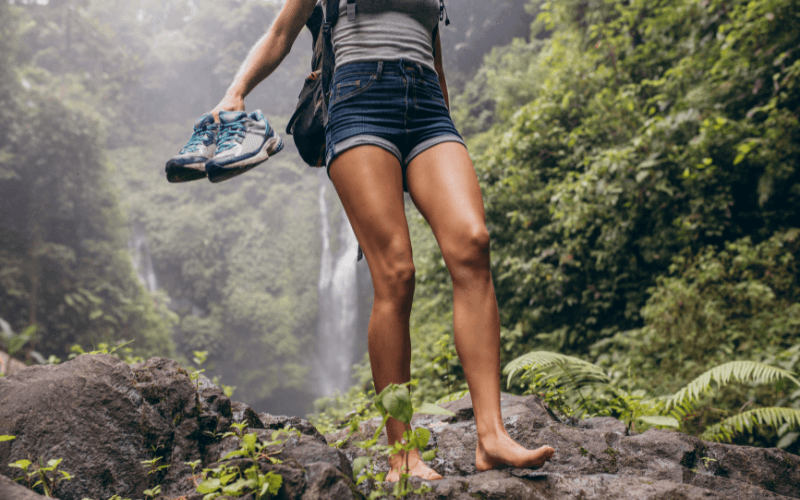On hot days it’s tempting to wander around barefoot. It’s soothing and refreshing, but going without footwear can be hazardous – depending on your personal health.
So, don’t ditch the shoes until you’ve read our handy guide.
Risk of Injury
With nothing to protect your feet, they’re vulnerable to cuts, punctures and scrapes. Rough surfaces, broken glass and rusty nails may lie in wait and this leads to injury. Any problems with the soles of your feet (even minor ones) seriously hamper your ability to walk comfortably and may have knock-on effects.
Exposure to Infection
With open wounds there is always a risk of infection. Public places like the beach, a park, swimming pool or gym changing room are particularly hazardous as fungal infections lurk in warm, damp locations – athlete’s foot or plantar warts, for example.
These conditions can be treated but they’re painful and likely to spread if left. Athlete’s foot easily can lead to fungal nail infections, and these are harder to deal with (although not impossible).
Lack of Protection
Without the cushioning of your shoes, the protective pads of tissue in the soles of your feet are subjected to greater pressure than normal. Over time this may cause damage and premature wearing of the pads (fat pad atrophy).
Ankle Problems and Fractures
A major function of shoes is to support your ankles. Without this, it’s easy to roll and sprain the ankle. Extreme cases can result in stress fractures – a painful and debilitating situation.
Issues With Gait
Without shoes, the soft tissues in your feet and ankles are under additional pressure. This affects all structures of the lower leg – ligaments, muscles, joints and bones – and hampers your ability to walk in a balanced way.
The plantar fascia is particularly vulnerable. This band of tissue runs from heel to toes and can become strained and weak. Plantar fasciitis is sure to follow – an extremely painful condition that takes a while to resolve (and makes walking extremely uncomfortable).
Exacerbates Existing Problems
If you’ve had any foot issues in the past, too much time spent barefoot may cause them to return – possibly, even more severely. If this is the case always check with your podiatrist before abandoning your shoes.
Diabetes and Vascular Conditions
Anyone suffering from circulatory disorders such as diabetes, Raynaud’s Syndrome or peripheral artery disease is especially at risk from foot problems. Circulation issues cause nerve damage, which greatly reduces sensation.
Sufferers can be unaware of a scrape or cut, and if infection sets in there’s every likelihood of serious problems to follow. These folks should never go barefoot and always check their feet regularly.
Is it Ever Ok to Go Barefoot?
That depends on your personal foot health. If you don’t have foot issues and you’re in good health, going barefoot can be beneficial and invigorating, but it’s not wise to do it for too long.
Strengthens and Stimulates
Without shoes, the muscles in your feet and lower legs must work harder to support you. This strengthens soft tissues and joints, increases flexibility and helps with mobility and balance. Direct contact with the ground stimulates circulation, which keeps muscles, bones and nerves happy and healthy.
Only go barefoot on a clean, soft surface such as carpet, grass or sand, and preferably in your own home (to avoid nasty surprises).
Always check with a podiatrist first. This may not be good for you.
The Right Advice at Feet By Pody
Keep your feet healthy and safeguard your overall health. Talk to our experienced podiatrists.

